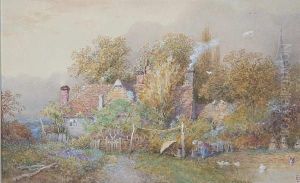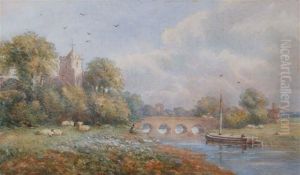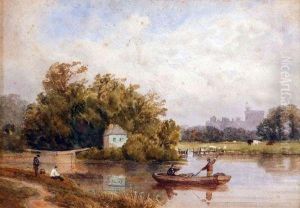Samuel Standige Boden Paintings
Samuel Standige Boden was a British artist primarily known for his work as a painter during the 19th century. Born in 1826, Boden's contribution to the art world spanned several decades, during which he developed a distinctive style that captured the essence of his era's artistic and cultural shifts. Not as widely recognized as some of his contemporaries, Boden nevertheless left a mark through his detailed and evocative paintings that often depicted landscapes, portraits, and historical scenes.
Boden’s artistic journey began in an era dominated by the Victorian sensibilities of Britain, a period characterized by rapid industrialization, social change, and a deep interest in both the historical and the exotic. While specific details about his early life and education in the arts are sparse, it is known that he was part of the vibrant British art scene, which included movements such as Romanticism and the Pre-Raphaelite Brotherhood. These movements, with their emphasis on emotion, nature, and attention to detail, influenced Boden's work, though he maintained a unique perspective that set his paintings apart.
Throughout his career, Samuel Standige Boden exhibited his works at various prestigious institutions, including the Royal Academy of Arts, a testament to his skill and the recognition he received from his peers. His paintings often reflected a fascination with light and shadow, a characteristic that added depth and realism to his landscapes and portraits. Boden's ability to capture the subtleties of expression and the intricacies of the natural world endeared him to patrons and the art-loving public alike.
Despite his talent and contributions to the art world, Samuel Standige Boden did not achieve the same level of fame as some of his contemporaries. His death in 1882 marked the end of a career that, while perhaps not as celebrated as it deserved to be, significantly enriched the tapestry of 19th-century British art. Today, Boden's works are held in various collections and continue to be studied by art historians and enthusiasts who appreciate his unique approach to painting and his ability to capture the beauty and complexity of his subjects.



